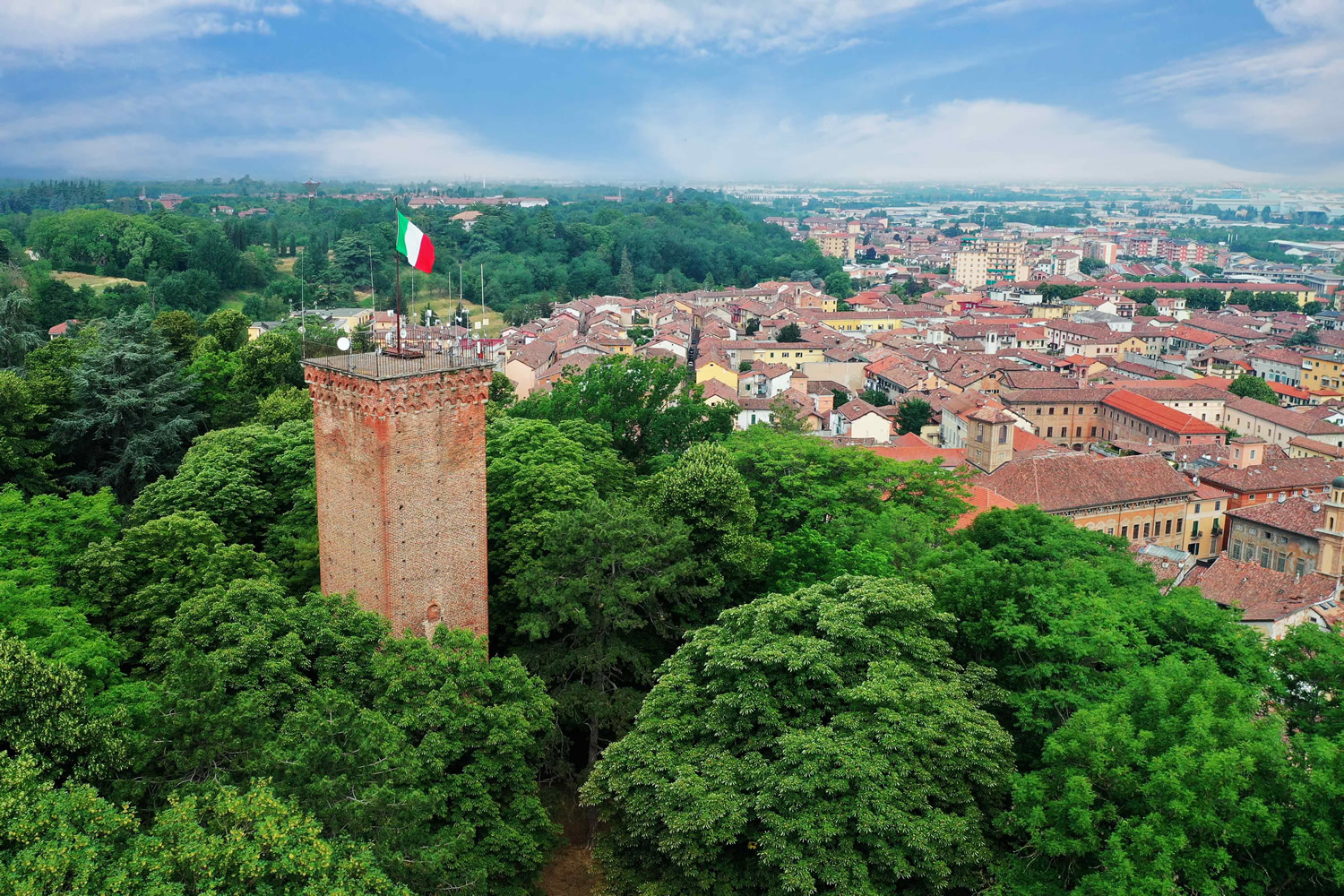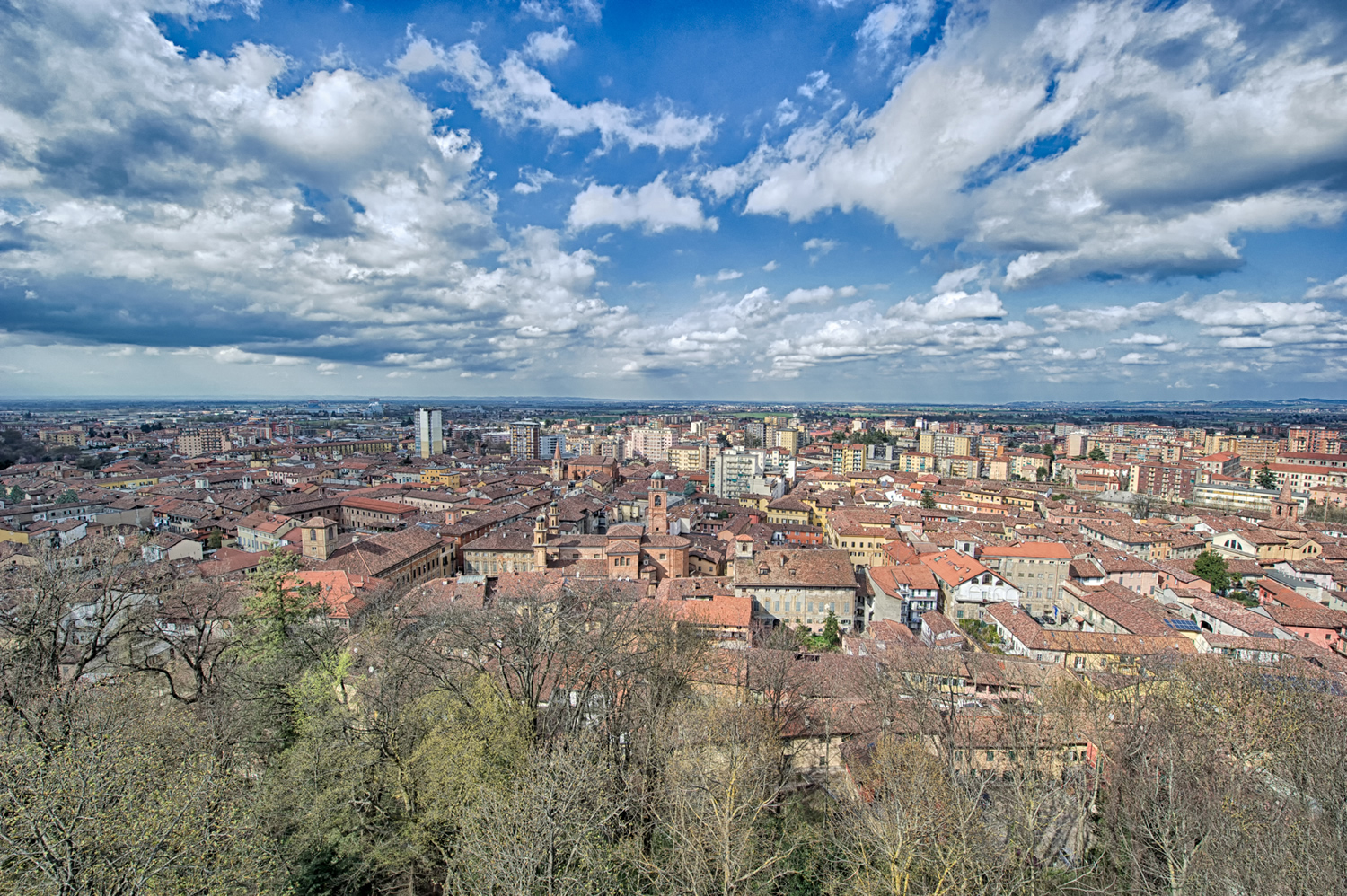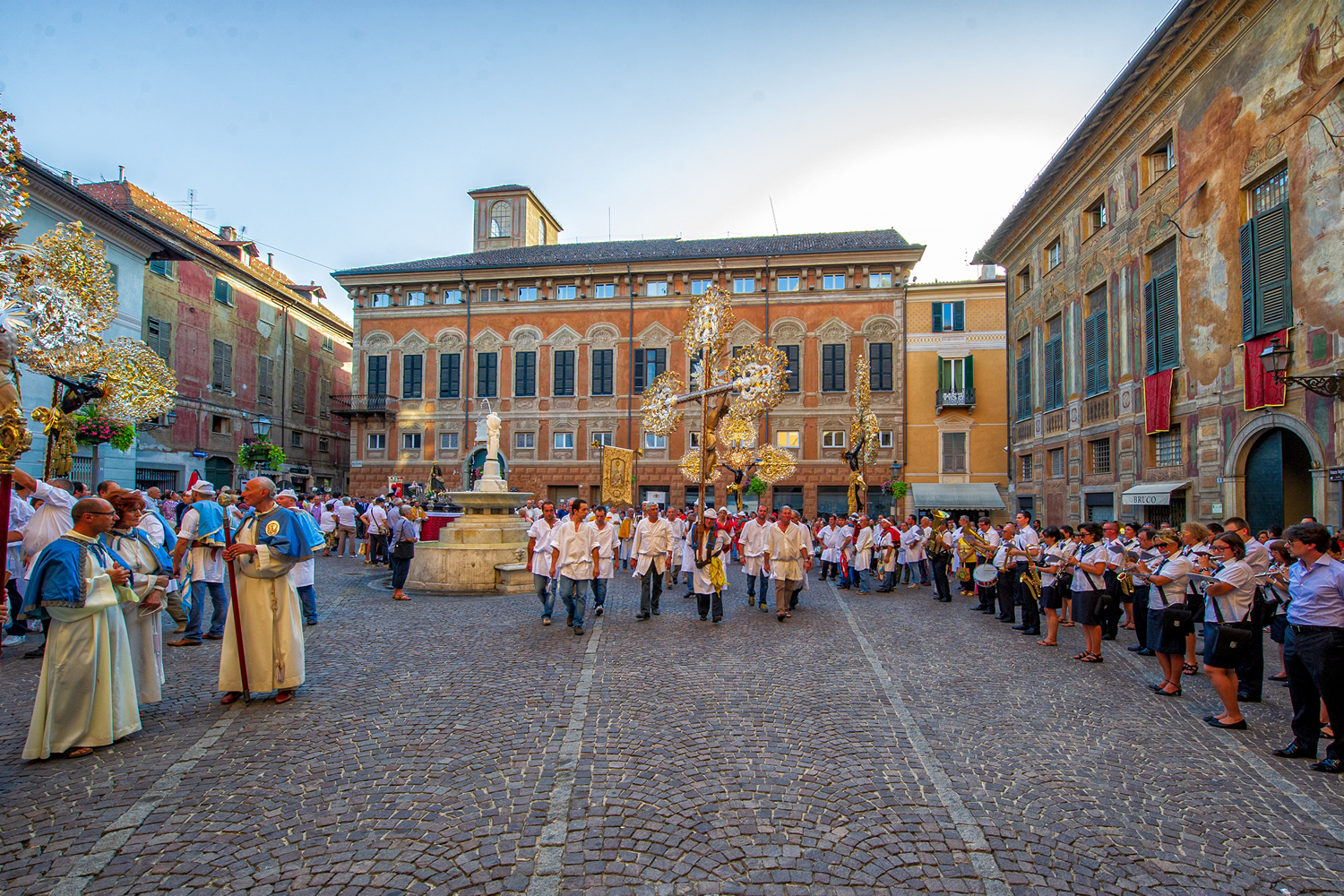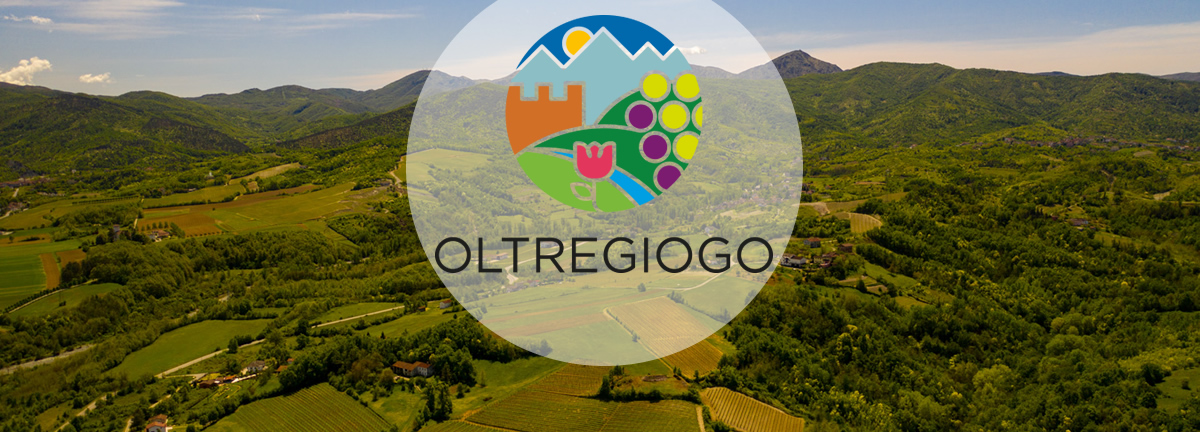Its origins seem to be traceable back to the abandonment of Libarna, whose population, little by little, formed new inhabited areas in the surrounding areas. This is how Curtis Nova also arose, a rural community which in the early Middle Ages fell – as did all the surrounding territory – into the Marca Obertenga.
Emperor Otto I, in 969, donated the town to the monastery of San Salvatore di Pavia. A few decades later, the castle arose.
In the first decades of the 12th century it became a free municipality, hanging in the balance between the cities that competed for the territory: Tortona, Pavia and Genoa.
«Ceded to the Marquis of Monferrato for a short period (1223-1232), it returned to Tortona again until 1264, and then passed under the dominion of William VII Longsword.» (from Wikipedia)
THE GENOESE ERA
In 1447, the Community of Novi, after the defeat of Ludovico il Moro, remained under the feudal dominion of the Fregoso family, until Andrea Doria’s return to Genoa. From 1529, it came under the direct dominion of Genoa, becoming the most important city of that vast territory called “Oltregiogo”, as a crossroads of commercial and monetary traffic between the Genoese area and the Po Valley.
«In 1799, at the time of the Ligurian Republic of which it was part from 1797 to 1805, Novi was the scene of a bitter battle, fought between the Lemme and Scrivia rivers and fought between the Austro-Russians […] and the French […]. Following their defeat the French were forced to fall back on Genoa. It then became part of the First French Empire, included in the territory of the Department of Genoa, of which it was part from 1805 to 1815, the year in which, following the agreements of the Congress of Vienna, the department was abolished and the city annexed to the Kingdom of Sardinia is included in the new Division of Genoa.» (from Wikipedia)
It was the capital of the Province of the same name during the Kingdom of Sardinia.
The suffix “Ligure” was added on 11 January 1863, following the passage to Piedmont which occurred four years earlier with the Rattazzi law, which incorporated the Province of Novi into that of Alessandria.

MONUMENTS AND PLACES OF INTEREST
RAW EARTH HOUSES
A typical presence in the rural panorama of the Novi Ligure area are the traditional earthen houses or trunere which can still be found on the plain in front of the city. These are ancient buildings for residential or agricultural use, built according to the traditional use of raw earth, sometimes mixed with straw. At one time they were partly demolished, but today those still existing are considered a heritage of local tradition to be safeguarded. Novi Ligure is the only municipality in Piedmont, and in northern Italy, to be part of the National Association of Raw Earth Municipalities.
EXCHANGE FAIRS AND PAINTED BUILDINGS
The Exchange Fairs arose in the 12th century in parallel with those of goods, as an evolution of the latter, as a result of the growing influx of different and often altered coins, as well as the difficulty of making payments from afar. The Novi Ligure Foreign Exchange Fair was established by the Genoese in 1621 and was held until 1692. It achieved great fame, becoming one of the most important fairs in Europe, after Frankfurt and Leipzig. The Fairs took place in predetermined periods:
February 1st – Apparition Fair
2 May – Easter Fair
1st August – August Fair
2 November – Fair of the Saints
The negotiations took place in the noble palaces, today called “painted palaces”, belonging to the noble Genoese families, such as Doria, Balbi, Spinola, Negroni, Centurioni, Durazzo and Dellepiane. Most of these buildings are painted in green or red, according to various customs.
THE MINTS
Connected to the Exchange Fairs, mints were created where money was minted, on the initiative of the Spinola family. The main mints were located in Ronco Scrivia, Arquata Scrivia, Rocchetta Ligure, Albera Ligure and Tassarolo, in whose castle the room where money was minted is still visible.
In the State Archives of Genoa and at the “Doria Archive” Economic History Study and Documentation Center of the Salvago Raggi Fund, the documents relating to the Mint of Ronco Scrivia are preserved, which was very active in the seventeenth century, when a small coin began to be printed. called “luigino”, which the Genoese sent to the Ottoman Empire. These locations in the Oltregiogo also became a small stop in the global circuit of silver, which from the Americas reached Spain, then Genoa and, once the currency was printed, continued to the great ports of the east, such as Smyrna and Constantinople and from there, towards Asia.

COLLEGIATE OF SANTA MARIA ASSUNTA
The Collegiate Church of Santa Maria Assunta, whose origins perhaps date back to the early Christian era, was consecrated a few years after the end of the construction works, in 1684.
The main altar was created in 1676 by a Genoese workshop; then, the relics of Saint Victor were moved to the chapel of this altar. Of notable interest is the wooden group placed above it, representing the “Calvary” made up of the Crucifix and four almost life-size statues, depicting Mary Magdalene, Saint John the Evangelist, Saint Peter and Saint Martha.
The chapel at the end of the right nave is decorated with stuccos designed by Andrea Pozzo (Jesuit architect and artist, Trento, 1642–Vienna, 1709). On the seventeenth-century altar there is a wooden statue from the fifteenth century known as the “Beata Vergine Lagrimosa”, the patron saint of the city. Two important paintings are preserved in the same chapel:the Annunciation with donor attributed to the Genoese Domenico Fiasella and dated 1660. The painting, a votive gift from the Spinola family, is a companion piece to the nocturnal scene of the Nativity of the Virgin (1666) by Fiasella’s main collaborator, his pupil and brother-in-law Giovanni Battista Casoni.
ORATORIO DELLA MADDALENA
The Oratory was built between the 15th and 16th centuries in accordance with the wishes of the Compagnia dei Disciplinati.
Here an important Calvary is preserved, composed of 23 life-size wooden statues, the work of the sculptor known as Daniele Fiammingo, as well as a Lamentation over Christ made up of 8 terracotta figures; both groups, connected to each other, date back to the second half of the 16th century.
Inside you can see a model of Novi Ligure in 1750, when the walls and the four access points were still present.
ROMUALDO MARENCO THEATER
The Romualdo Marenco Theatre, originally named after King Carlo Alberto, was built starting in 1837 by a company made up of 37 citizens. The inauguration took place on 2 October 1839.
In the first half of the 20th century, the building was dedicated to maestro Romuald Marenco, a great composer and conductor from Novi.
The Theatre, conceived as an autonomous construction on the nineteenth-century model of the Italian Theatre, was designed by the architect Giuseppe Becchi with the approval of his colleague Luigi Canonica, the greatest theatre expert of the time and already a consultant in the project of the Carlo Felice Theatre in Genoa. The historic “horseshoe” hall was built with three tiers of superimposed stages and the upper gallery overlooking.
In 1943, a fire destroyed the stage equipment: the Theatre remained unusable until 1947. After a brief period dedicated to dancing on the occasion of the 1952 Carnival, in 1961 there was even talk of demolition, averted by the intervention of the Superintendency of Fine Arts.
In 2004 the Marenco Theatre Foundation was born which, with the intervention of the Municipal Administration and the Cral Alessandria Foundation, took care of the restoration of the Theatre, which reopened in 2019.

MUSEUM OF THE CHAMPIONS
Inaugurated in 2003, the Museum of Champions is the largest European cycling museum. A tribute dedicated to Piedmontese cycling champions such as Costante Girardengo who was born in Novi and began his formidable sporting career, and Fausto Coppi, who was an honorary citizen of Novi. A special central track divides and organizes the exhibition space, but, above all, represents the evolution of the road surface. In the large rooms at the side of the track there is an epitome history of Milan-Sanremo through images and pages of sports newspapers. At the back of the central room there is a curious display of bicycles related to trades. The Hall of the Champions is enriched with relics and unpublished testimonies to the glories of Girardengo and Coppi. The other audio-visual rooms present to the public, in addition to period films, visual and audio testimonies of spectacular arrivals or epochal duels. Through the videos it is possible to enrich the information about the pieces on display or relive important moments in the history of road or dirt cycling.
Gallery
